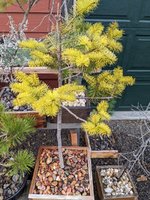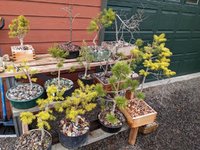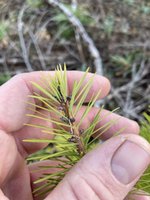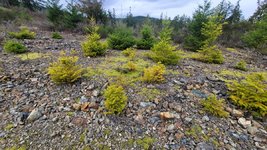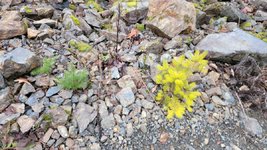@Fir-man Do you still have some of that succulent soil around for a close up pic? I think your soil isn't draining too well, and yellowing needles on conifers is a common symptom. Being in Washington state you guys get a lot of rainfall, meaning your trees probably aren't drying enough in between waterings. If you do still have the bag of succulent soil also check to see if there's
peat moss is listed as a component. Peat moss if used in high quantities can cause drainage issues (it also loves to compact leaving little airspace for roots).
Do note that I do not live near your area but your symptoms look very similar to some that I have experienced in the past. In fact I have an EWP that I just got that has had some needles yellow from being in a peat and bark nursery mix.
Don't panic there are several things you can do:
1) Do what you can to keep the soil drier (move trees around to shelter them from the rain etc.)
2) Use wedges and such to angle the pots to improve drainage (i.e. tilt the pots the best you can)
3) Use a chopstick and make holes throughout the soil to aerate the soil
related to #3, you can add a coarse aggregate (lava, pumice, etc.) into the holes to keep them open
If you are careful you should be able to guide your trees safely into the spring when they be repotted into better draining soil mix. Best of luck!
